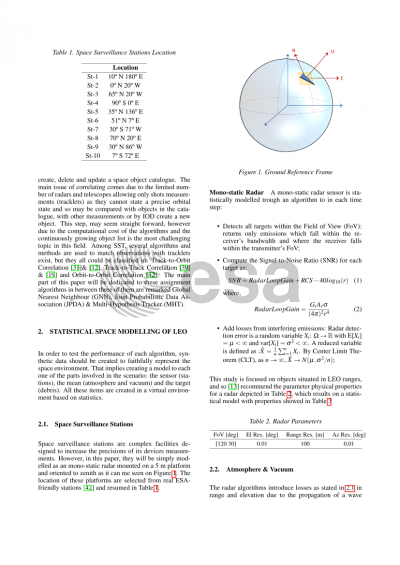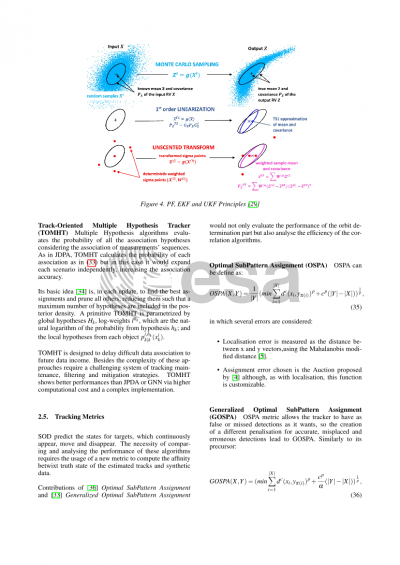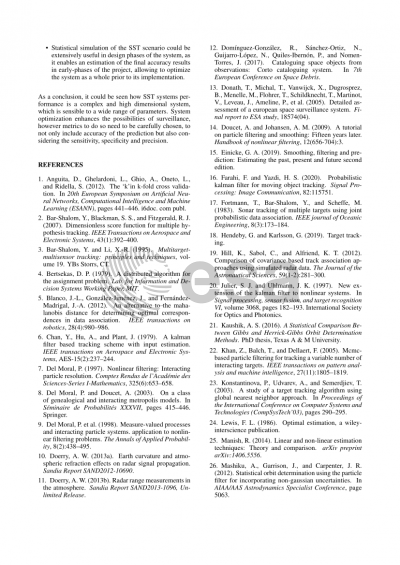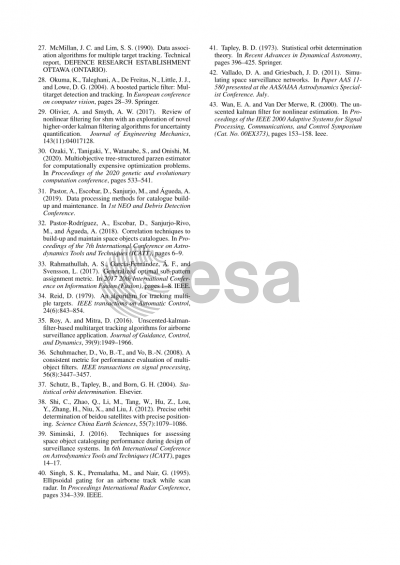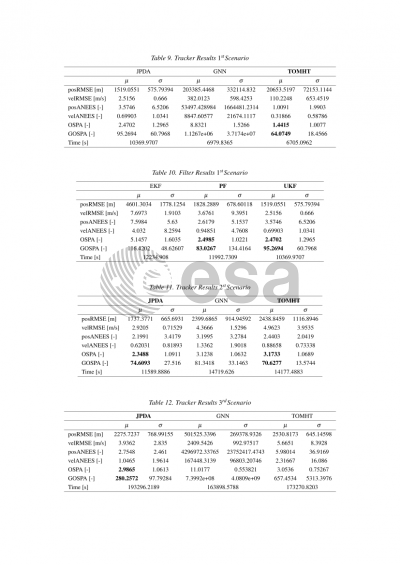Document details
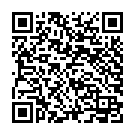
Abstract
Space Surveillance and Tracking (SST) is an increasingly necessary field of research due to the exponential growth of debris. During this paper several space environments are going to be simulated while surveillance and tracking is performed. Nowadays, exist several ways of tracking & cataloguing space items, however the exponential growth of them together with the bias and variance introduced by the surveillance systems suppose a challenge in predicting and correcting debris orbits while introducing new objects in the existing catalogues. In this work, most of the important filtering and associating algorithms are implemented and compared in several space environments in LEO. To do so, debris, surveillance stations and the space medium are statistically modelled to generate synthetic data which, reliably represent the space environment to produce a high sampled analysis of the algorithms.
Finally, all the algorithms used in the Multi-Tarjet-Tracker (MTT) system are compared with classical error metrics (MSE & ANNES) and introducing some specific tracking metrics (OSPA & GOSPA) which would not only represent the error associated to the spatial deviation but also will represent the effectiveness of the tracking system.
Preview

